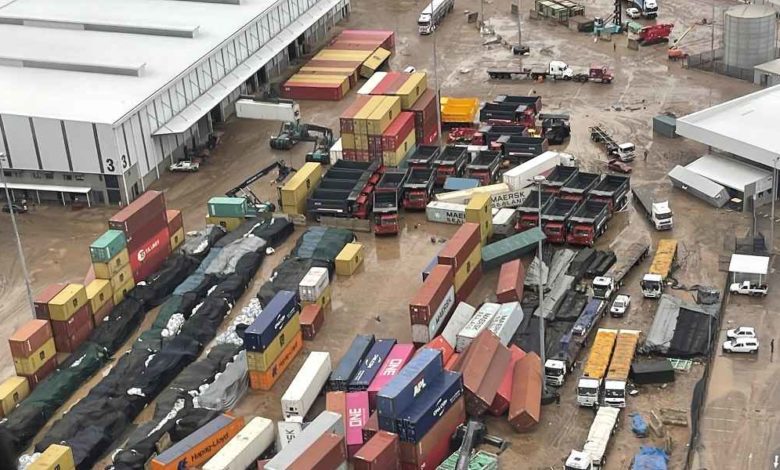Marine insurance is changing – ports must not leave themselves exposed

Edward McNamara, CEO of Armada Risk Partners, with some useful advice for the ports community.
Maritime executives will have raised a weary eyebrow last week as it was confirmed in Splash that the El Nino weather phenomenon will return this year. The Climate Prediction Center at the National Oceanic and Atmospheric Administration in the US said there is as an 84% chance that this El Niño will be stronger than normal. El Niño is a weather pattern that builds in the Pacific Ocean that can impact weather conditions around the globe impacting shipping and port operations. While it may lead to a lower hurricane season in the Atlantic there is likely to be stronger cyclone activity in the central and eastern Pacific. Meanwhile changing rainfall patterns could impact the drought in the Panama Canal potentially limiting the number of daily transfers.
The news comes as the port insurance industry is becoming more complex and risk averse. Post covid and the Ukraine war insurance companies are changing how they evaluate policy. Policies were usually assessed on NLE (Normal Loss Expectancy): This is the loss estimate expected under normal conditions. But we are seeing policy quotes moving to the more expensive risk criteria of PML (Probable Maximum Loss) or MFL (Maximum Foreseeable Loss). In this context the port can be hit with far higher premiums than necessary. And even then that coverage, despite its expense, may not fully protect the port from the risks it faces. For this reason it is now very important to thoroughly check your coverage and source a wide variety of quotes with your broker.
Ports are on the frontline of extreme and changing weather patterns with risk of damage, disruption and third party claims. Estimates show insured losses from natural catastrophes continue to be above the 10-year average of $81bn, at $115bn. Hurricane Ian, which struck Florida in September, was last year’s costliest natural catastrophe event, with an estimated insured loss of $50-$65bn. The Port of Houston has further been identified in a recent study by Oxford University as the most at risk in the world from extreme weather. But given there are 29 ports in Texas alone, which are critical to US and global trade, you start to see the size of the problem being faced. As well as risk to life, injuries and infrastructure damage there is disruption to port operations to consider with costly delays. Globally Oxford’s researchers estimate as much as $63 billion of trade is at risk every year as a result of climate change the conclusion being ports worldwide require serious infrastructure upgrades.
As the last few years have graphically illustrated ports are further at risk of being dragged into economic turbulence as a result of strikes, disrupted supply chains and economic sanctions. Russia’s invasion of Ukraine, for example, led to Maersk cutting its ties by selling its 30.75% stake in its Russian port operator, Global Port Investments, following the sanctions imposed by western governments on the Kremlin.
Another worrying trend we are seeing is lack of cover for port blockage. If extreme weather or a ship grounding blocks access to a port, who will get it opened, how fast and who will pay? With the constant increase in rates and premiums, the feedback we receive is that some ports are looking at cutting coverages and costs. However, they are not realising that some coverages such as port blockages are critical. Many port operators believe the government will unblock their port because of the urgency of bringing in ships with essential supplies. But this is a high risk strategy as government’s can be wrestling with bureaucracy and other emergency priorities. This can result in potentially massive delays and a huge loss of income if port operations are paralysed.
It is further very important for ports stakeholders to come together to understand risk. The multitude of parties operating in a port from security contractors and shipping lines to truck and rail operators and tenant businesses need ensure the insurance element of their contracts is clearly understood. Too often the insurance wording in contracts is vague and open to legal interpretation. Ports and terminals should work with their insurance brokers and port partners to review their agreements to clarify liability. This would greatly enhance the resilience of ports and terminals and their partners preventing unexpected and contentious claims.
